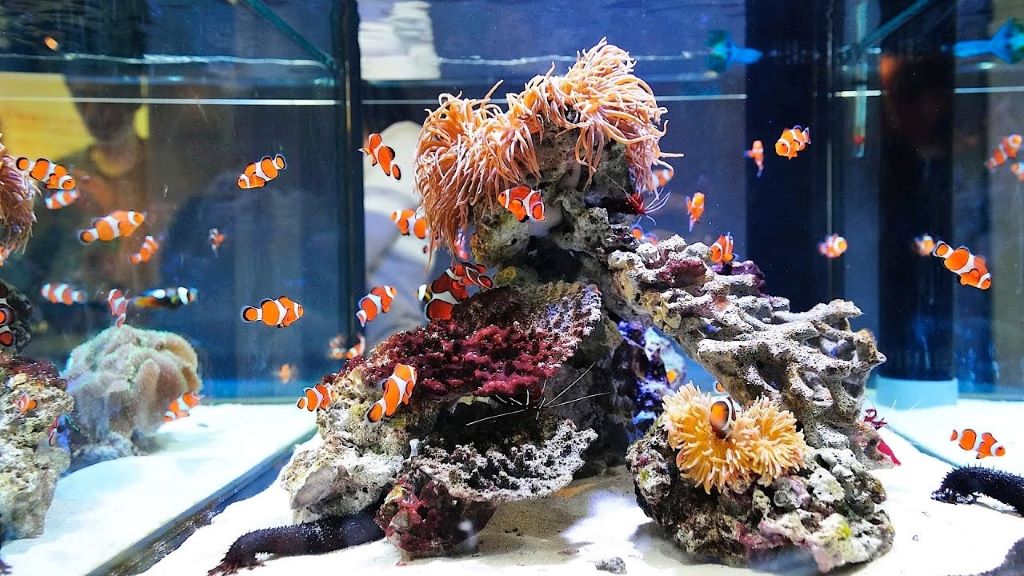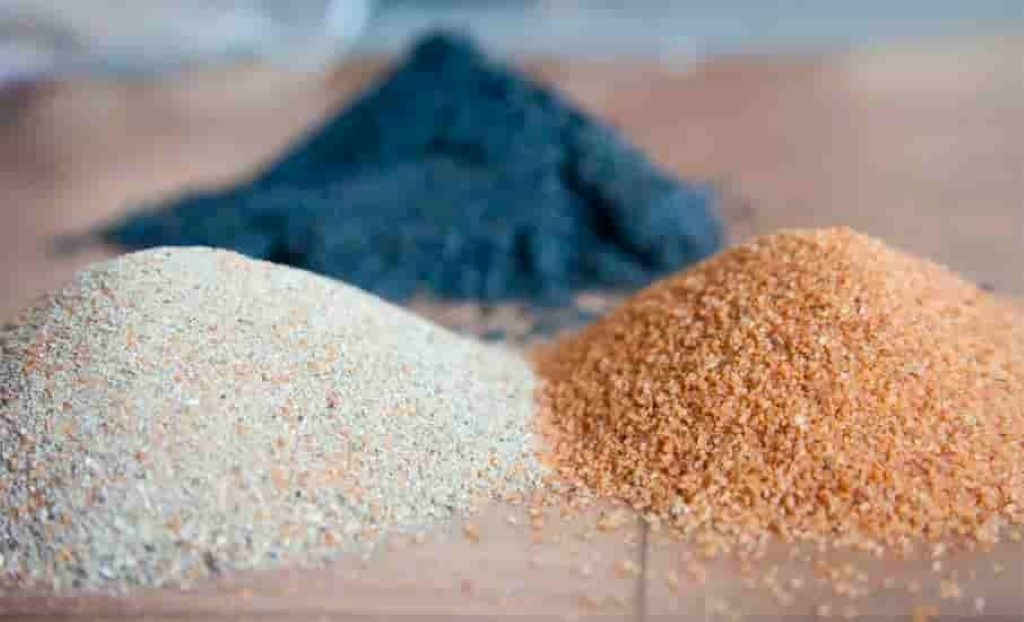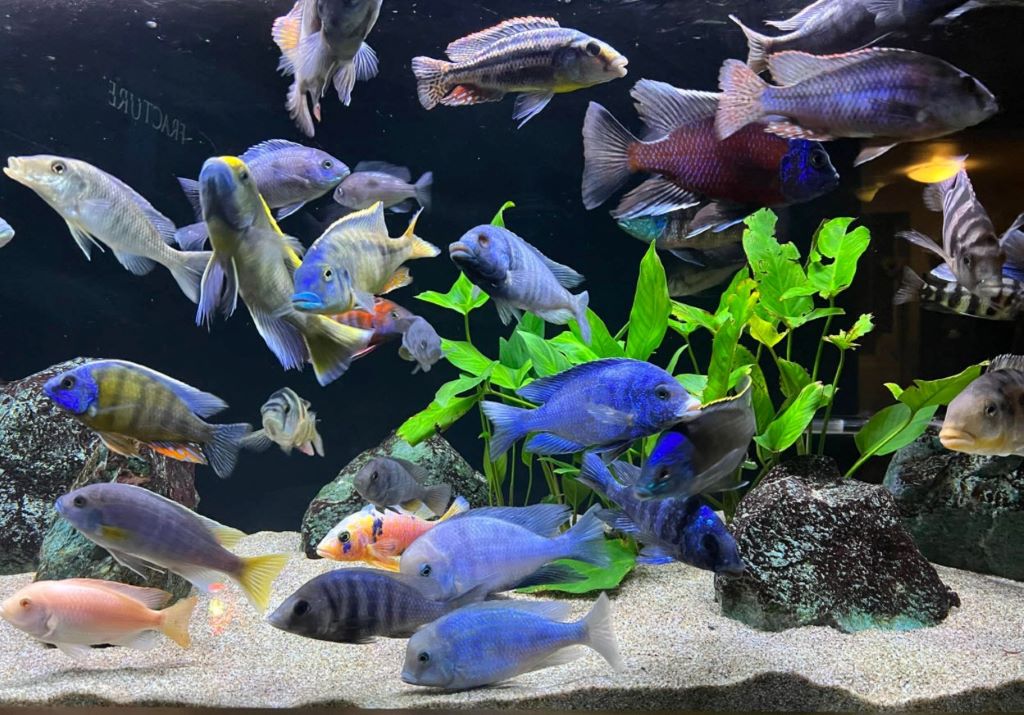A pristine, white sand bed can transform your reef tank from a simple aquarium into a mesmerizing underwater world. But maintaining that sparkling cleanliness in a dynamic reef environment can be a challenge. Detritus, uneaten food, and fish waste can quickly accumulate, turning your idyllic seascape into a murky mess. This comprehensive guide will equip you with the knowledge and tools to keep your reef tank sand bed clean and your coral inhabitants thriving.
Understanding the Importance of a Clean Sand Bed
The sand bed in your reef tank isn’t just an aesthetic element; it plays a vital role in the overall health of your miniature ecosystem. It acts as a natural filter, harboring beneficial bacteria that break down harmful waste products like ammonia and nitrates. A clean sand bed promotes efficient gas exchange, preventing the buildup of toxic hydrogen sulfide, which can be detrimental to your marine life. Furthermore, a healthy sand bed provides a natural habitat for various microfauna and infauna, like copepods and small worms, which contribute to the biodiversity and nutrient cycling within your reef tank.
The Enemies of a Clean Sand Bed
Before we delve into cleaning strategies, it’s crucial to identify the culprits behind a dirty sand bed:
- Overfeeding: Excess food that isn’t consumed by your fish settles on the sand bed, decomposing and contributing to nitrate buildup.
- Insufficient Water Flow: Poor water circulation allows detritus to settle and accumulate, creating stagnant areas within the sand bed.
- Lack of Clean-Up Crew: A diverse clean-up crew, including snails, crabs, and starfish, plays a vital role in consuming leftover food and algae, keeping the sand bed tidy.
- Improper Filtration: An inadequate filtration system struggles to remove particulate matter from the water column, leading to increased sedimentation on the sand bed.
Proactive Measures for a Pristine Sand Bed
Preventing excessive dirt buildup is the first line of defense in maintaining a clean sand bed. Here are some proactive measures:
- Feed Responsibly: Observe your fish during feeding time and only provide the amount of food they can consume within a few minutes.
- Optimize Water Flow: Strategically position powerheads and wavemakers to create turbulent flow throughout the tank, preventing detritus from settling on the sand bed.
- Cultivate a Diverse Clean-Up Crew: Introduce a variety of detritivores, such as Nassarius snails, Cerith snails, and hermit crabs, to help consume leftover food and algae.
- Regular Water Changes: Perform regular partial water changes (10-20% biweekly) to remove dissolved organic compounds and maintain optimal water quality.
- Effective Filtration: Invest in a high-quality protein skimmer and consider adding a refugium to enhance biological filtration and nutrient export.
Effective Sand Bed Cleaning Techniques
Even with proactive measures, occasional cleaning is necessary to maintain a pristine sand bed. Here are some effective techniques:
- Manual Siphoning: During water changes, use a gravel vacuum or siphon to gently remove detritus from the sand bed. Be careful not to disturb the delicate ecosystem within the sand.
- Targeted Blasting: Use a turkey baster or a small powerhead to direct water flow towards specific areas of the sand bed, dislodging detritus and allowing the filtration system to remove it.
- Sand-Sifting Stars: Certain starfish species, like the Archaster typicus, are natural sand sifters, constantly turning over the sand bed and consuming detritus. However, ensure your tank is large enough and has sufficient sand bed depth to support a sand-sifting star.
Choosing the Right Sand for Your Reef Tank

The type of sand you choose can influence the ease of maintenance and the overall health of your reef tank. Here are some popular options:
- Aragonite Sand: This calcium carbonate-based sand is a popular choice due to its buffering capacity, helping to maintain stable pH levels in the reef tank.
- Live Sand: Live sand is pre-seeded with beneficial bacteria and microfauna, providing a jumpstart to your tank’s biological filtration.
- Crushed Coral: Crushed coral provides a coarser substrate, promoting good water flow and providing refuge for smaller organisms. However, it can be more challenging to keep clean than finer sand.
Pro Tip: Avoid using silica-based sand, as it can contribute to unwanted algae growth in your reef tank.
Reviews of Popular Sand Cleaning Tools
- Python No Spill Clean and Fill Aquarium Maintenance System: This popular system combines water changing and gravel vacuuming in one convenient tool, making maintenance a breeze.
- Pros: Easy to use, reduces mess, efficient water changes.
- Cons: Can be bulky to store, may not be suitable for very small tanks.
- Fluval FX Gravel Vac: This battery-powered gravel vacuum offers powerful suction and easy maneuverability, making it ideal for spot cleaning and targeted detritus removal.
- Pros: Cordless convenience, powerful suction, easy to handle.
- Cons: Battery life may be limited, requires regular cleaning to maintain performance.
- Lee’s Ultimate Gravel Vacuum: This classic gravel vacuum is a reliable and affordable option for manual siphoning, offering good control and efficient detritus removal.
- Pros: Affordable, durable, easy to control.
- Cons: Requires manual siphoning, may be less convenient than powered options.
Frequently Asked Questions (FAQ)

-
How often should I clean my reef tank sand bed?
The frequency of cleaning depends on various factors, including stocking density, feeding habits, and the efficiency of your filtration system. Generally, a light siphoning during water changes every two weeks is sufficient. However, observe your sand bed regularly and adjust the cleaning frequency as needed.
-
Can I use a magnetic algae scraper to clean my sand bed?
While magnetic algae scrapers are excellent for cleaning aquarium glass, they are not recommended for sand beds. The scraping action can damage delicate organisms living within the sand and may not effectively remove detritus.
-
My sand bed has developed black spots. What does this mean?
Black spots on the sand bed can indicate the presence of anaerobic bacteria, which thrive in oxygen-depleted environments. This is often caused by poor water circulation or excessive detritus buildup. Increase water flow, siphon the affected areas, and consider adding more beneficial bacteria to address the issue.
-
Is it necessary to stir my sand bed regularly?
While occasional stirring can help prevent anaerobic pockets, excessive disturbance can disrupt the beneficial bacteria colonies and release trapped toxins into the water column. Focus on maintaining good water flow and rely on your clean-up crew to keep the sand bed aerated.
-
Can I use a vacuum cleaner to clean my reef tank sand bed?
Standard household vacuum cleaners are not suitable for aquarium use. They lack the necessary control and can introduce harmful chemicals or debris into your tank. Stick to aquarium-specific gravel vacuums or siphons for safe and effective cleaning.
-
My sand is constantly getting blown around by the powerheads. What can I do?
Adjust the position and direction of your powerheads to create a more balanced flow. You can also create barriers using rocks or coral to reduce the direct impact of the water flow on the sand bed.
-
How can I prevent sand from getting into my overflow box?
Ensure your overflow box has a pre-filter sponge or mesh to prevent sand and other debris from entering the filtration system. You can also create a small barrier around the overflow box using rocks or coral rubble to minimize sand intrusion.
-
I have a deep sand bed (DSB). Does it require special cleaning?
Deep sand beds (DSB) generally require less frequent cleaning than shallow sand beds due to the increased biological filtration capacity. However, it’s crucial to maintain good water flow throughout the DSB to prevent anaerobic zones. Occasional gentle siphoning of the top layer may be necessary to remove excess detritus.
-
Can I use a toothbrush to clean my sand bed?
While a toothbrush can be used for spot cleaning in small areas, it’s not an ideal tool for overall sand bed maintenance. It can be time-consuming and may not effectively remove detritus from deeper layers.
-
What should I do if my sand bed is covered in algae?
Excessive algae growth on the sand bed can indicate nutrient imbalances or insufficient herbivores in your clean-up crew. Address the underlying cause by adjusting nutrient levels, increasing water flow, and introducing algae-grazing snails or hermit crabs.
Conclusion
Maintaining a clean sand bed is essential for the health and beauty of your reef tank. By implementing proactive measures, utilizing effective cleaning techniques, and choosing the right equipment, you can ensure a thriving environment for your marine inhabitants. Remember, a clean sand bed not only enhances the aesthetics of your aquarium but also contributes to the overall stability and balance of your underwater ecosystem.




